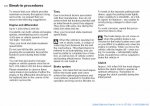MrElussive said:
I always try to follow the break-in period, but I think the whole concept of break-in period with a 4-stroke engine is pure bullshit. I think manufacturers only suggest that because that is the safest thing to do. The pistons in 4-stroke engines are seated properly and it is extremely hard to mess them up unless it's due to high mileage. ....... So what's the difference if you take it to redline or they do? Absolutely nothing.
The company I work for owns two corporate planes (Cessna Twin and a King Air) so I have had a chance to talk to our aviation mechanic/pilot about engine break in during long trips. With aircraft engines they are fanatic (for obviously good reasons) about proper break in. Our cars do not have aircraft engines, but he says the same concerns apply.
Here's what most people I have talked to consider the definitive analysis of engine break in. I highlighted a few interesting points. Read what the experts have written and form your own conclusions:
![Smile [:)] [:)]](/images/smilies/smile.png)
============================================
Suggestions for Proper Engine Break-In
---------------------------------------------------
Whenever an engine's piston rings are replaced whether in part or in entirety it is necessary to break in the engine. Piston rings are replaced at a complete engine overhaul or repair, top overhaul or single cylinder overhaul or repair.
When we refer to engine or cylinder break in, we are talking about the physical mating of the engine's piston rings to it's corresponding cylinder wall. That is, we want to physically wear the new piston rings into the cylinder wall until a compatible seal between the two is achieved.
Proper engine break in will produce an engine that achieves maximum power output with the least amount of oil consumption due to the fact that the piston rings have seated properly to the cylinder wall. When the piston rings are broken in or seated, they do not allow combustion gases to escape the combustion chamber past the piston rings into the crankcase section of the engine. This lack of "blow-by" keeps your engine running cleaner and cooler by preventing hot combustion gases and by-products from entering the crankcase section of the engine. Excessive "blow-by" will cause the crankcase section of the engine to become pressurized and contaminated with combustion gases, which in turn will force normal oil vapors out of the engine's breather, causing the engine to consume excessive amounts of oil. In addition to sealing combustion gases in the combustion chamber, piston rings must also manage the amount of oil present on the cylinder walls for lubrication. If the rings do not seat properly, they cannot perform this function and will allow excessive amounts of oil to accumulate on the cylinder wall surfaces. This oil is burned each and every time the cylinder fires. The burning of this oil, coupled with "blow-by" induced engine breathing, are reasons that an engine that hasn't been broken in will consume more than its share of oil.
When a cylinder is overhauled or repaired the surface of it's walls are honed with abrasive stones to produce a rough surface that will help wear the piston rings in. This roughing up of the surface is known as "cross-hatching". A cylinder wall that has been properly "cross hatched" has a series of minute peaks and valleys cut into its surface. The face or portion of the piston ring that interfaces with the cross hatched cylinder wall is tapered to allow only a small portion of the ring to contact the honed cylinder wall. When the engine is operated, the tapered portion of the face of the piston ring rubs against the coarse surface of the cylinder wall causing wear on both objects.
At the point where the top of the peaks produced by the honing operation become smooth and the tapered portion of the piston ring wears flat break in has occurred.
When the engine is operating, a force known as Break Mean Effective Pressure or B.M.E.P is generated within the combustion chamber. B.M.E.P. is the resultant force produced from the controlled burning of the fuel air mixture that the engine runs on. The higher the power setting the engine is running at, the higher the B.M.E.P. is and conversely as the power setting is lowered the B.M.E.P. becomes less.
B.M.E.P is an important part of the break in process. When the engine is running, B.M.E.P. is present in the cylinder behind the piston rings and it's force pushes the piston ring outward against the coarse honed cylinder wall. The higher the B.M.E.P, the harder the piston ring is pushed against the wall.
The surface temperature at the piston ring face and cylinder wall interface will be greater with high B.M.E.P. than with low B.M.E.P. This is because we are pushing the ring harder against the rough cylinder wall surface causing high amounts of friction and thus heat. The primary deterrent of break in is this heat. Allowing to much heat to build up at the ring to cylinder wall interface will cause the lubricating oil that is present to break down and glaze the cylinder wall surface. This glaze will prevent any further seating of the piston rings. If glazing is allowed to happen break in will never occur.
We must achieve a happy medium where we are pushing on the ring hard enough to wear it in but not hard enough to generate enough heat to cause glazing. If glazing should occur, the only remedy is to remove the effected cylinder, re-hone it and replace the piston rings and start the whole process over again.
===================================
I believe BMW engineers have analyzed their engine design, factory test procedures, etc. and achieving this "happy medium" is why BMW specifies the RPM limitation and mileage restriction. I also feel that depending on a manufacturer's assembly techniques and factory test run, the recommendations will vary.


![Frown [:(] [:(]](/images/smilies/frown.png)
![Smile [:)] [:)]](/images/smilies/smile.png)